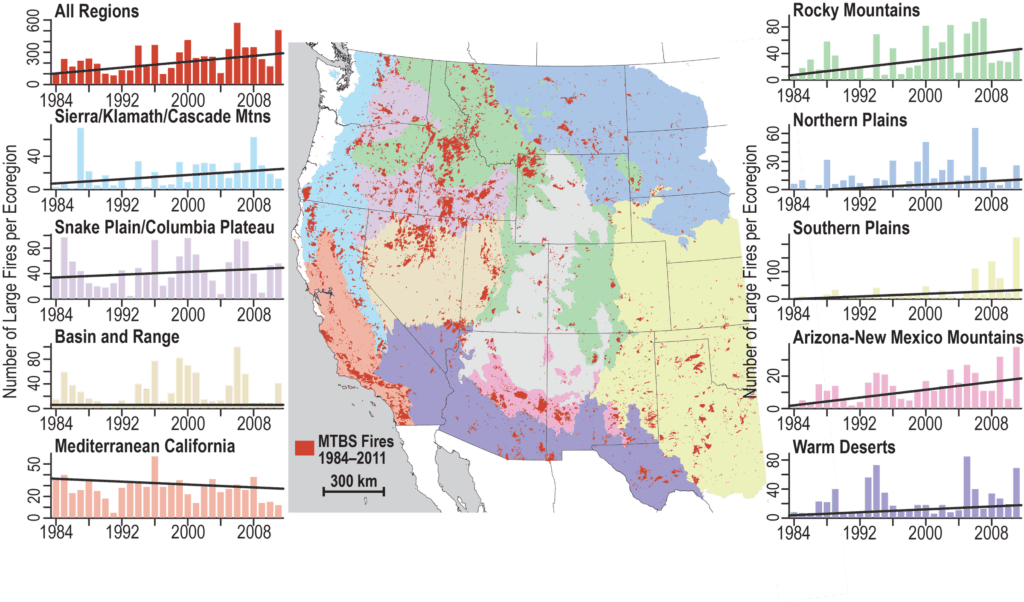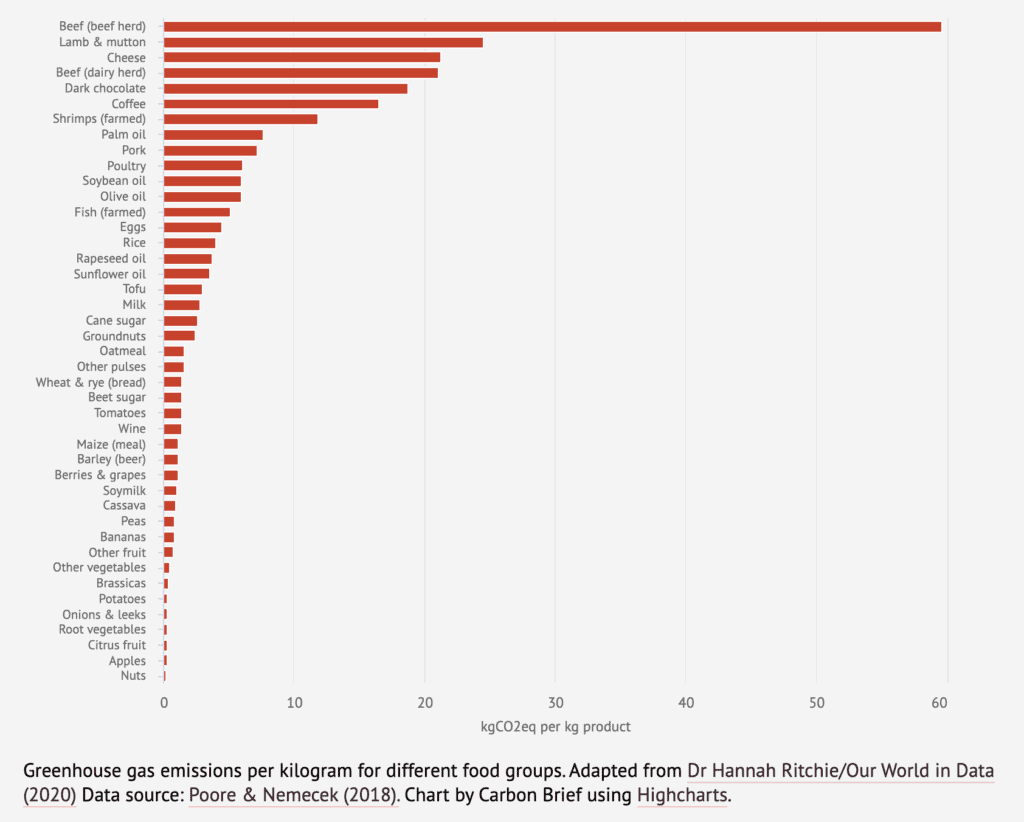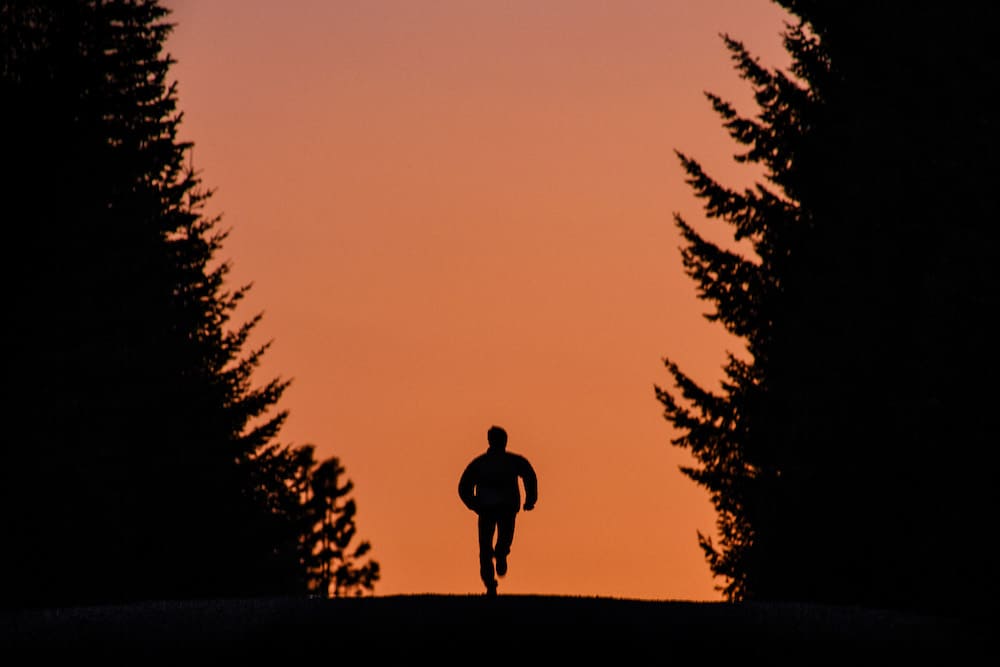What Can Ultra Runners Do To Help Reverse Climate Change?
by Chase Parnell – September 16, 2020 – 📸: Nate Gerhardt
I don’t know about you, but these wildfires have me in a funk. I’m angry, sad, scared, and I’m not okay with just waiting until they’re gone and then hoping they don’t come back with greater and greater force with each passing year. How many of you runners out there lost your favorite section of trail? Are you sick of the smoke, running inside, feeling trapped? Or worse, did you actually lose a family member? A home? Your community? I think it’s time we all consider how ultra runners as a class can be a part of the solution. The strong correlation between the rise in wildfires and a warming planet has me motivated to start making some major changes. I hope you’ll join me in this fight against climate change. In this post, I’ll be offering up some suggestions and things to consider. I hope it doesn’t come off as a holier-than-thou rant. That’s not my intention and trust me, I’m no saint when it comes to a lot of this, but I’m trying.
Now, forest and fuels management is a very important part of the wildfire solution, but not many of us have any sort of power to affect change in the rules and regulations of the United States Forest Service. I’m all for getting involved in the political process and lobbying for legislative change, but more pressing I think is that we start taking ownership of our own lives and choices as they relate to the greater, over-arching problem of climate change. Most ultra runners I know are big-time believers in the “Leave No Trace” ethos. Pack it in, pack it out. Making an effort to decrease your carbon footprint is squarely aligned with that same mission.
In Oregon, we’ve lost a lot. Trail networks we love are gone, favorite post-run bakeries and coffee shops gone, incredible views that induced awe and wonder in our kids gone. Half a million Oregonians have been displaced and I’m certain you’ve seen the apocalyptic images from people on the ground. And while I understand that forest fires are a naturally occurring phenomenon, their rapid proliferation in recent years is one of the surest signs that something is wrong. We’re losing the balance.
Rising global temperatures make for drier, more flammable environments. Less snowpack in the mountains leads to less moisture in the valley floors during fire season. Someone doesn’t put out their campfire (84% of wildfires are started by humans), and because the vegetation is so parched, it goes up in flames easier, spreads quicker, and is harder to contain.

Source: Fourth National Climate Assessment
Human-produced carbon emissions are causing the climate to change. The increase in number and severity of wildfires is merely one symptom. There are countless more: species extinction, erratic weather events, sea level rise, reduction in fresh water resources and agricultural yields. The list goes on and on.
And if we’ve learned anything during the Covid era, and now during this horrific wildfire season, it’s that the government can’t protect us. 200,000 dead from Covid, millions of acres burned, many communities and towns burned. We need to take matters into our own hands and do our part to be a part of the change. We’re getting a glimpse now into how grim life can be; this will be nothing compared to the pandemonium that will ensue if we truly push the earth beyond its tipping point. If these crazy times tell us anything, it’s that humans think they’re in control, until they’re not. Push too hard on this tiny speck in the universe called Earth, and it will inevitably push back.
So What Can Ultra Runners Do To Combat Climate Change?
Bike or Run Commute OFTEN – This is a no-brainer. We do this stuff for fun. I’m not saying you need to always bike or run for transportation, just more. I get it, groceries need to be purchased and carried home, you’ve got kids that need to go places, you live in the country and those roads get icy in the winter; it doesn’t always make sense to use human-powered transport, just bike/run/walk to your destination when you can. The federal Environmental Protection Agency says a typical passenger vehicle emits about 4.6 metric tons of carbon dioxide per year. Can you try to cut that in half?
Adopting the commuter lifestyle might seem overwhelming, but I promise you it’s really not much of a sacrifice once you have your systems in place. And guess what, there are other benefits beyond reducing emissions. If you’re on your bike or feet, you are burning calories and building fitness. You also don’t have to wait in traffic! One of the most satisfying moments of my day is riding in the bike lane passed all those cars during Bend, Oregon’s 5pm rush hour. I get to go directly up to the light for a brief pause, and then proceed on just as I do on any other day. I hope one day we can progress to a place where there is actually bike traffic in bike lanes in the United States, but for now, enjoy your traffic free bike or run commute!
MOSTLY Race Locally/Regionally – I’m not saying you have to give up on your dream of running UTMB someday, but at least let climate concerns be a part of the calculus when choosing which races you’re going to run. Have you ran all the ultras in your state? Do you need to fly across the country to run a race? Is there an FKT in your backyard that is just as exciting? If you must fly, are you willing to offset the emissions of your flight? At MyClimate, you can calculate the dollar amount it would take to offset your carbon emissions for a specific trip. For example, say I want to run Leadville. I need a flight from Bend to Denver. I can input those two cities into MyClimate and it’ll calculate the amount of carbon I’m responsible for and the dollar amount it will take to offset. You can donate directly to MyClimate and they will invest your dollars in long-term carbon reducing projects with proven success. My “carbon bill” for flying to and from Denver would be $17. Manageable. Or if you have a specific organization you want to support, you can still use the MyClimate calculator and then donate to something like Protect Our Winters, a healthy climate advocacy group supported by some pretty decent runners you might have heard of: Ricky Gates, Jorge Maravilla, Stephanie Howe, Anton Krupicka, Dakota Jones, Luke Nelson, Joe Grant, Clare Gallagher, and Mike Foote.
Train PRIMARILY from your home – Listen, I love the trails as much as the next person, but unless you live in a place with incredible access from town, you’re going to need to fire up the car and drive to the trailheads. This is a delicate balance. Exposure to and appreciation of beautiful trails and landscapes is one of the main reasons you’re going to want to be a steward of the environment, but on the other hand, driving an extra hour each day for high-quality daily runs is something that should probably give you pause. Maybe you can solve this by putting up a few bumpers: only drive to trails 1x or 2x per week, offset your carbon emissions by setting up a monthly donation plan, or maybe you decide that you’ll bike to the trailhead and cut an hour off the run in exchange. Get creative, with the primary goal being to decrease the amount of time you spend in your car.
Buy Local when POSSIBLE – Know your farmer! Make it a goal to literally know the name of the person that grew/harvested/killed your food on the plate. Bonus: in addition to knowing that the food wasn’t shipped half way around the world to get to you, it’ll be healthier for your body too! This is obviously not achievable for all your food, and it’s damn near impossible to buy local when it comes to other types of goods such as electronics or homeware. But try to source local, then regional, then national.
Be cautious when you see a large brand touting, “Made in the USA.” Even New Balance says on their website, “We’re proud to be the only major company to make or assemble more than 4 million pairs of athletic footwear per year in the USA…” By using the word “or”, New Balance could have their shoes manufactured in China but put the laces in here in the USA, call that an assembly, and their statement would be true. They go on to say, “Where the domestic value is at least 70%, we label our shoes Made in the USA.” Can we get a definition of domestic value, please?
When you can’t buy local, make sure you’re buying brands that are transparent in their practices and are genuinely trying to reduce their impact on the global environment. Peruse Rainforest Alliance certified brands before making new purchases; from toilet paper to refrigerators, you can get certified for anything. Shocker: Patagonia is the only certified brand in the outdoors space.
Lastly, the following graph is merely something to keep in mind the next time you’re at the grocery store:

Buy MORE of Your Nutrition in Bulk – Get yourself a gel flask and buy your favorite gels in bulk. This will reduce the trash you create with all those single-serving packets. How many millions of gel packets are laying in landfills out there? Less trash in landfills means less methane released into the air, which is greenhouse gas enemy number two. If you absolutely must use single-serving packets, check out Gu’s partnership with Terracycle, “an international upcycling and recycling company that collects difficult-to-recycle packaging and repurposes the material into other affordable, innovative products.” Some running shops even accept used gel packets and will ship to Terracycle for you! I love the fact that many race organizations are cupless, but what about having a special container at aid stations for collecting gel packets? We can do better!
The Time is Now. Redeem 2020!
There are an unfathomable amount of things we could be doing to “be better” when it comes to all of this stuff. It’s overwhelming and honestly I’d be embarrassed to tell you all the areas in which I fail to live up to the recommendations I’m offering here. But what if we agree to try to be just a little better than we were yesterday? We’re not going to solve the climate issue overnight. We don’t need to feel guilty about our past actions or inaction, we just need to take a single solitary step in the right direction.
This might be a poor analogy, but I’m going to use it anyways. I was raised in a religious home. Nobody actually knows with 100% certainty if there really is a God or not, but one compelling argument that always hit home for me was the following: even if God doesn’t end up existing, say we die and there is nothing on the other side, but we spent our whole life trying to abide by the moral teachings our religion prescribed: to be a good person, follow the golden rule, care for those in need. Say we do all that, we die, and it turns out there is no God. What have we lost? Did we live a less selfish life? Likely. Were we a better version of ourselves? Probably. Were we fooled? Yes, in some sense we were colossally duped, but did our faith bring about more good than harm? I’d say the answer in most cases is yes.
So say you’re still unsure about the science around climate change but you decide to act anyways; you start bike commuting, you buy your gels in bulk instead of single-servings, you run more local races, you order the sea bass instead of the filet mignon. And yet, time passes and you reach the end of your life still without really knowing if climate change is as catastrophic as everyone said it would be. Well, what did you lose by treading a little lighter during your stay on earth? Do you think you’ll regret not driving more, not emitting more carbon, not eating more steak, or regret being a part of a movement to protect the natural environments we know and love? I don’t think so. In fact, I think you’ll be quite proud that you chose to make some sacrifices for the greater good, even if your contributions are hard to quantify and define.
Earth is the only known planet capable of sustaining life. We are the perfect distance away from the sun. We don’t know how blessed we are to even exist. Let’s not live in a manner that takes this granted.
Here’s a metaphor that might hit closer to home. As ultra runners, we routinely place incredible stress on our bodies. Race and train too much and you’ll soon realize that the well of energy is not infinite. We’ve seen this over and over on the elite side of our sport. Some overdo it, learn from their mistakes, recalibrate, and find a sustainable trajectory. Some overdo it, push beyond repair, and we never see them on a podium again.
It’s time to take some corrective measures in the way we live if we’re going to right the ship on climate change. We’re approaching the iceberg and we need to start the turn now. Let’s be a sport and community that leads by example. Let’s not let 2020 be a year we’d rather forget, but instead, the year that convinced us it was time for change.
Appreciate this article? Consider supporting us via Patreon for as little as $2 a month. We appreciate your support. It goes a long way in keeping Treeline Journal afloat!



Solid. Thanks for the tips. I like the MyClimate carbon offset option. Will try and use that next time I take a plane. I’ve always taken that attitude towards the environment. Even if it is all a big hoax (no fucking way), doesn’t it just feel better to leave a lighter footprint when your small amount of time on this earth is over? We drank the cool aid and got too comfortable. Unfortunately, I think you’re preaching to the choir when it comes to your audience…trail runners. Generally a tuned in bunch. Even if every one of us lived like monks, there’s too many Joe Six-pack shitheads out there who just don’t care. Keep ’em coming.
Hey Eric, yeah, it can feel demoralizing for sure when you feel like your efforts are so inconsequential in the grand scheme of things. But as Captain Planet used to say, “With our powers combined…” Ha, that might be a very obscure reference for a 90s kid, but you get the point; collective action. Appreciate you making an effort, and I think trail runners in places like where you live (Portland) can be considered the choir, but I’m shocked at what I see on social media by ultra runners. I know Clare Gallagher is pretty outspoken but check out some of the comments she gets when she voices her environmental opinions. Blows me away that ultra runners could love being on trails but not actually care about stewardship in any visible way. All that to say, I think there are different breeds out there. Hoping this will resonate with some people who might even be reading this type of thing for the first time. Thanks for reading!
Great article Chase! You give solid suggestions. We have worked hard to lessen our footprint. We drive an electric car (best decision we ever made) and try to buy locally. We have always tried to think before we buy something- what will happen to that item when we are done with it? Will it end up in the landfill or can we recycle? Your idea to buy bulk hits on that. We need to stop buying plastic. Is there a non-plastic alternative? Can you buy that detergent in a cardboard box instead of a plastic jug? Sometimes I feel we are they only ones fighting this fight, so thank you for your article!
Hey Jenny! Sounds like you are doing it right! Really cool. I didn’t know you had an electric car. If we ever get out to Rochester, I’ll need a tour! Keep up the good work. Feel free to send over any new things you’re doing on this front. We’re always in need of inspiration too!
extend the thought on Ultras to – what can I do at or running on Ultras to lessen my footprint? bring a cup! commit to never using single use, throw away cups.
Thanks for all the great recommendations. Consider this: also, during this time of COVID, more items are likely to be in single use cups, tasting or sampler size containers and so forth – but once this is over, consider eating more of the local produce edibles and less of the packages stuff. bring that little ziplock or other pouch and fill it will your to-go items.
heck you can probably even stash a camping plate in your finish bag and eat from that instead of paper or plastic plates or bowls. Try to remember to bring your own! just remember when prepping for each Ultra: ask yourself, what can i do to minimize my footprint at this Ultra? and go through that mental checklist. make it a habit…! and pass on the tips you have, that you have found to work well to get away from the throw-it-away-after-one-use Ultra Race or just basic life pattern. Let’s do this!!